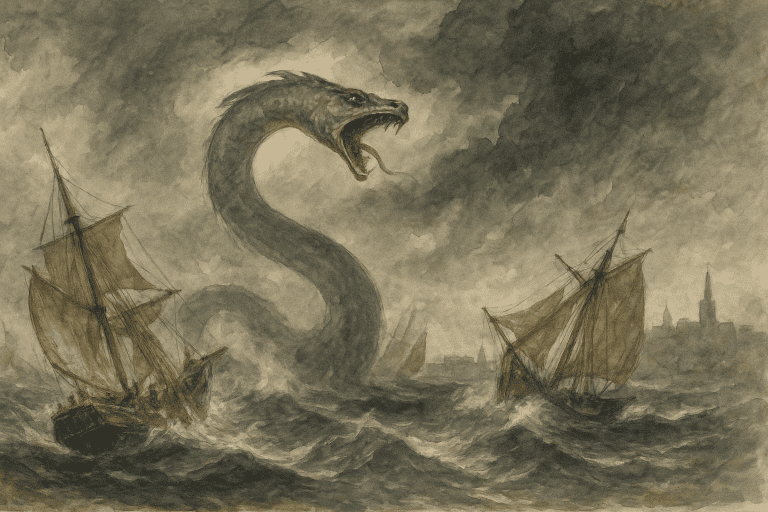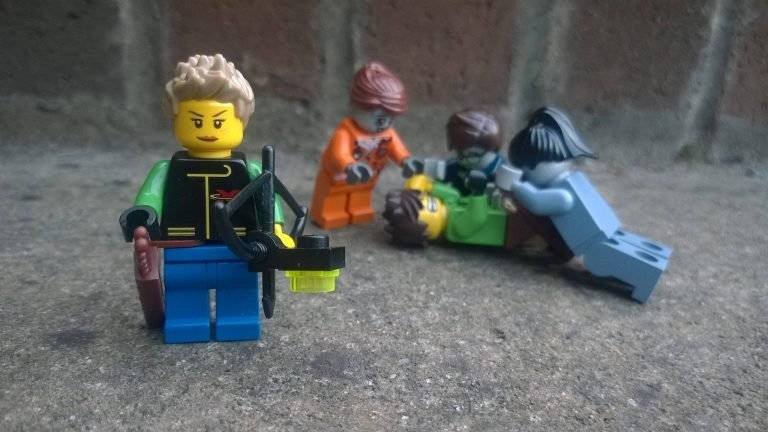
A single arrow, loosed beneath a moonless sky, carves a new reality from a father’s certainty, flinging it toward the unknown. 28 Years Later greets its audience with a scream: a fractured symphony of instinct and intention, of despair and rebirth. The film unfolds within the hollow of a skull—vast echoes, free-floating memory, a relentless insistence on forward motion. A taut chord runs through its marrow: survival demands shields and weapons, alongside the courage to pierce one’s own illusions. A bow, an arrow, a crossing point—these represent a confrontation with fear, with lineage, with the moral geometry of violence. The arrow becomes a question of how agency carves hope from the remnants of a world undone.
Jamie moves across the wrecked landscape as though reciting a liturgy. Each measured breath, each sinewy flex of finger and string, pulses with resonance. When he places the bow in the unwavering hand of his son, Spike, he passes along a mandate: the geometry of survival, the necessity of precision and restraint. Alfie Williams, aged thirteen during filming, arches his stance with the eagerness of youth confronting gravitas. The camera lingers on his hands, on the arc of that arrow, drawn slow as a mythic incantation, released with the shock of both triumph and fear. By the time it strikes a distant target, the film has folded inward and expanded outward: the arrow’s flight becomes history, grief, inheritance.
On Holy Island, walls stand draped in algae-green damp, their outlines softened by the lapping tide. Jamie’s lessons echo across sand and stone, a liturgy of existence. Archery transcends its use as a tool of war; it becomes ritual, prayer, argument. One pull of the string argues for mindfulness; the following release argues for consequences. That tension animates the film’s emotional architecture. Spike’s first successes bloom into pride; his faltering shot radiates guilt. The arrow becomes a diplomatic envoy between predator and prey, between the instinct for dominance and the compass of conscience.
Grief stalks the islands in silent form. Isla, Spike’s mother, coast-wrecked by illness yet luminous with protection, carries the poignancy of ravaged beauty. Jodie Comer embodies her with crystalline resolve. Her presence shapes the film’s heartbeat: each day she breathes into fragile space, each breath itself an elegy. A night steeped in rain, workmen’s lanterns and slow-falling leaves contains her goodbye, and we watch as Jamie traces lines over her cheekbone, memorizing the map of her face. Their love forms an archive. Isla’s passing becomes a map—their memorial performed at Fountains Abbey’s stone crypt, sealed from wind and children’s laughter, a sanctuary for reckoning. In that chamber, Jamie and Spike erect a bone structure, a temple of absence constructed in the raw geometry of loss.
City and countryside transform across decades. Abingdon’s derelict meat lockers, Norwich’s gutted cathedral, the Thames Road partially reclaimed by marsh and railway sleepers—they breathe haunted oxygen. Writers Danny Boyle and Alex Garland glean poetry from rot and archaeology. They coax language from rust and tide, from hallways swollen with puddles reflecting shattered glass, from corridors of silence in which memory speaks loudest. Abandoned cars inch forward like dreaming beasts; alders grow through dashboards. An overturned baby stroller lies half-buried in woodland, taunting us with questions of who left it, and why.

Archery returns in that overgrown cityscape—a defiant reclamation of sovereignty. Spike draws his father toward the edge of a rooftop car park; he nocks an arrow into artificial light, flings it across concrete, across absence. A random disk snaps from a signboard; the moment sobs with necessity. That arrow becomes a confrontation: between Spike and a world disintegrated, between Jamie and the risk he must let his son bear. Archery becomes a code—self-discipline encrypted through gesture. Its stillness becomes a form of violence: silence becomes aggression when the bow remains in its case.
The infected retake human form. They march in ritual array, mouths stained with drought-black saliva, their eyes holding a vacant stare. They gesture like mourners at a funeral for humanity’s compassion. Some yield red-capped gestures, others clasp cloth; they kneel before Spike and Jamie as though entreating absolution. Their infection unites them into a tribe, as human as the rest, traced through bloodlines of our worst impulses, of scapegoating and salvation.
Leading them emerges Samson, six-foot-eight, a tragic colossus whose physical magnitude overshadows all cowardice. Chi Lewis‑Parry’s presence stands silent, his face painted with mud and history, a warfare conducted through his eyes. Each step he takes sounds like redistributed regret.
Jamie’s archery training conveys a moral calculus: distance, angle, velocity. When an arrow meets the infected, the residue of death whispers at the target end, while the real impact settles in the archer’s spine. That calculus echoes again when Jamie encounters Sir Jimmy Crystal, an enigmatic cult leader and would-be messiah. Crystal’s sermon floats atop traffic, booming over abandoned streets like a question thrown out to the wind. He promises renewal; he marshals the infected like church acolytes. His children—five daughters formed in his image, rising around him with steel rapiers drawn—form a counterpoint: ritual formed into violence; certainty welded into weaponry. Jimmy’s gospel preys on fear, his sermon becoming a manual. He offers living sacrifice; massacre replaces archery.
Jamie’s final stand arrives at the convent of relics—a half-swallowed church and half-hidden archaeological dig. He meets Crystal’s daughters in the twilight of abandoned pews, St Christopher’s gutted statue leaning overhead. Spike’s last arrow flies in a silence heavier than war drums, paring the world into before and after. That shot brings both liberation from threat and a reckoning with legacy. Jamie turns to Spike. In that silence, he recognizes that archery has shaped his son into someone capable of taking sacred agency. He raises his hand—a gesture of prayer, thanks, fear, and love melded—and Spike lowers his bow. The field becomes a cosmos in miniature: Earth, arrow, quiet. A covenant forms.
28 Years Later retraces history’s excavations—what ethics repay genocide, how hope resists entropy, what form art takes when everything is lost. The film circles memory as though it were a beast, sniffing its flanks, smelling where fear and love entwine. Cinematographer Anthony Dod Mantle arrays each shot with gothic reasoning: light spills like thought across rubble; archways frame interrogations. A church’s opening becomes an eye socket, a broken train a ribcage. We sense ruin’s melody moving inside us.
We sense ruptures: Isla’s quiet laughter, sacred and fleeting; Spike’s muttered fear; Jamie’s grief chiseled into salt-stung skin. Ralph Fiennes’s Dr Kelson stands at those intersections, his presence anchored by calm and bone-deep empathy. He pairs a doctor’s oath with an existential reckoning: survival becomes more than an extension of form—it transforms into a question of what it means to be human among the undead of conscience.
Just before the credits, an epilogue: a brief shot of Holy Island’s chapel altar, its relics departed. The sea washes the stones clean of footprints. A warble of Young Fathers’ electronic pulse moves through the final frames. The music sustains the arrow’s echo: memory curves back on itself; each ending becomes a question for what follows. Archery erects that question in physical form. The arrow flies, lands, and leaves us trembling at its impact.
This article is part of our free content space, where everyone can find something worth reading. If it resonates with you and you’d like to support us, please consider purchasing an online membership.


